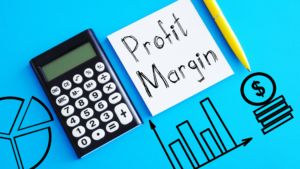Cash flow or cash flow is the financial report that reflects the flows of income and expenditure of money that a company experiences in a given period.
The difference resulting from these effective inflows and outflows of money is called balance or net flow and is one of the best indicators of a company’s liquidity.
The cash budget is the ideal way to maximize the company’s resources, both losses and profits, to improve its administration and expense management.
If you want your company to grow and prosper in the best way, here we will take a tour of what a cash budget is, how to prepare it and the benefits it brings when applied.
What is the cash budget?
A cash budget is a financial tool that seeks to forecast all the income and expenditure of money of a business within a certain time. In this way, business administration and expense management are optimized.
It also allows the financial manager to identify what the financial needs and opportunities are in the immediate future. The result of this tool is a forecast of cash surpluses and losses.
If the money flow is negative, it means that expenses are above income. Therefore, if the flow of money is positive, the income is greater than the expenses.
What is the cash budget for?
The cash budget allows companies to meet their short-term needs. If there is an excess of cash, the firm could choose to invest it; if there is a cash shortage, it might think about obtaining finance.
Similarly, accurate cash flow information is essential for managers to take appropriate action, manage liquidity, and avert more concerning situations where major issues like bankruptcy might arise.
By maintaining daily monitoring of the company’s finances, you can know if the results obtained are as expected. If this is not the case, you can react and correct the route in time.
In that sense, the cash budget helps us detect what is generating losses and what are the obstacles that prevent us from reaching the proposed objective. Therefore, a negative report will help take action to improve results.
On the other hand, a positive report will generate more confidence among creditors or investors to continue allocating resources to the project or to grant credit facilities.
Good or bad, both allow you to make decisions about the future of the company.
You Can Read Also: Are SMSFs Still Worth It for Self-Employed Business Owners?
Cash budget structure
The structure of a cash budget lies in the identification and effective documentation of the income and expenses of a business, whether income from sales or payment of bills.
To successfully carry out a cash budget, it is important to consider the following points:
Estimation of payments to suppliers and creditors
Business sales projection
Setting minimum income that ensures the correct functioning of the company
Once these points are considered, a cash budget can be developed. In turn, this data must be up to date; Otherwise, it is practically impossible to budget.
In a cash budget, terms like “profits” or “losses” are not used, since the process has nothing to do with the results.
Importance of the cash budget
According to the Inter-American Investment Corporation (IIC), the importance of making a cash budget lies in the ability to anticipate any lack of cash, create a solid basis to demonstrate credit requirements and, if you have several accumulated balances, be able to use them for capital investment.
Companies need to have a cash budget due to the difficulty of keeping cash receipts and disbursements synchronized. Precisely to begin preparing a cash budget, it is essential to have these data: cash receipts and exits from the company.
This information is found in the records of the company’s accounting department and, once in hand, you must organize the balances and plan the cash flows for the coming months.
- What is cash flow used for?
It is important to remember that cash flow represents the actual entrance and outflow of cash rather than the profits or losses that are often shown on an income statement.Correct management and projection of cash flow allow maintaining the company’s liquidity in a positive and, therefore, making key decisions such as:
You Can Read Also: Choosing the Right Profit Margin Calculation with IMTAAA
How much merchandise can you buy?
The determination of fixed and variable costs, as well as the contribution margin necessary in the manufacturing process, to achieve the break-even point.
The anticipation of a future cash deficiency and the associated requirement for financing.
The need to buy on credit or make cash purchases.
The possibility of selling on credit or limiting yourself to selling for cash.
The establishment of the credit limit granted to clients.
The payment of debts on their due date or their refinancing.
The creation of a basis that supports the requirement for loans or credits, and its justification in the presentation of a business plan.
Making new investments.
The adoption of each of these decisions in one direction or another affects the evolution of the business and its income statement.
Cash flow management models for your company
Cash flow management allows you to organize and control the income and expenses of a business, to guarantee the liquidity and subsequent viability of the activity and projects of a business.
Now, there are different cash flow models. Each of them reflects different information regarding the viability of the activity:
Cash flow from operations refers to income and expenses as part of the normal activity of the company.
Investment cash flow refers to the investments made and from which a future profit is expected.
Financial cash flow, refers to operations such as contracting and paying loans, buying and selling shares and other operations related to the company’s money.
Keys to cash flow management
To have a healthy cash flow, it is advisable to adopt a series of management guidelines:
Cash flow forecast
- The positive and negative changes in the company’s treasury must be analyzed to make appropriate decisions.
- If there is a decline in liquidity, the origin must be detected to resolve it to the extent possible.
- If it is strengthened, it should be used to expand the activity or address new projects.
- Track collections and payments
- This monitoring avoids delays both in the payment of invoices and in collection from clients.
Rationalization of financial leverage
- Understanding the company’s actual debt capacity and financing requirements enables management of financial costs and maximises profits from them.
- It is important to remember that before an investment starts to make a profit, it must mature.
- Control of financial cash flow guarantees that the company will have the capacity to pay its loans until that time arrives.
Expense control
Sometimes, it may be necessary to limit or eliminate unnecessary expenses that are reducing liquidity and could even force an increase in the company’s debt.
Stock control
Finally, inventory control prevents the loss of raw materials or the premature purchase of stock.





